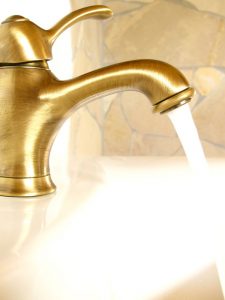 Here’s a frightening fact about water quality in homes: around 85% of the homes in the U.S. have hard water in their plumbing. One of the areas where hard water is most common and most pronounced is right here in New Mexico.
Here’s a frightening fact about water quality in homes: around 85% of the homes in the U.S. have hard water in their plumbing. One of the areas where hard water is most common and most pronounced is right here in New Mexico.
We said this is a frightening statistic, but we want to remind you not to panic about health concerns. Hard water isn’t actually harmful for people to drink. What hard water actually means is there is a larger than normal concentration of the minerals magnesium and calcium. These are naturally occurring minerals and are found in many food and beverage items you consume regularly. (And you’ve no doubt heard about how important calcium is for developing good strong bones.)
However, you don’t want magnesium and calcium in your water supply, because while it may be fine for you and your family to drink, it isn’t fine for the rest of the plumbing. Hard water creates limescale along the inside of pipes, a leading cause of an increase in water pressure as well as eventual clogging and leaks. Hard water will also significantly reduce the service life of appliances such as water heaters. It creates nuisances as well, since hard water makes it tough to work up soap lather, stains clothing in laundry machines, and leaves an unpleasant film behind on surfaces—including your skin and hair!
The solution to hard water is to have professionals install a water softener in Clovis, NM.
How Does This Water Softener Work?
Removing the calcium and magnesium ions from water requires a process different from standard filtration methods, such as activated carbon adsorption filters. A water softener uses a process of ion exchange to remove calcium and magnesium, “softening” the water.
Ion exchange means swapping one set of ions for another. In the case of a water softener, the ion swapped for the calcium and magnesium ions is sodium, which doesn’t cause problems with limescale the other troubles of hard water.
To exchange sodium for the hard water minerals, a water softener uses a chamber filled with resin beads. The beads are negatively charged and covered with positively charged sodium ions. The freshwater from the water main enters the chamber and passes around the beads. The positively charged calcium and magnesium ions are drawn to the beads, releasing the sodium ions in exchange.
There’s a limited amount of sodium ions, and when they’ve been exhausted, the water softener goes into its recharge cycle. A brine tank sends a mixture of salt and water through the beads, soaking them so they pick up sodium ions and release the magnesium and calcium ones. The hard water ions are washed away with the water from the brine tank, and the resin beads are ready for the next water softening cycle.
Get Started With a Water Softener in Clovis
If you want to find out if there’s hard water in your household plumbing, contact us to arrange for water testing. If you find high levels of hardness in your water, you can rely on us to install a whole-house water softener that will solve the problem for you. We can also offer other water treatment solutions if we discover other impurities in your water. Trust us to see that your home receives the finest quality water.


.jpg)
[1].jpg)